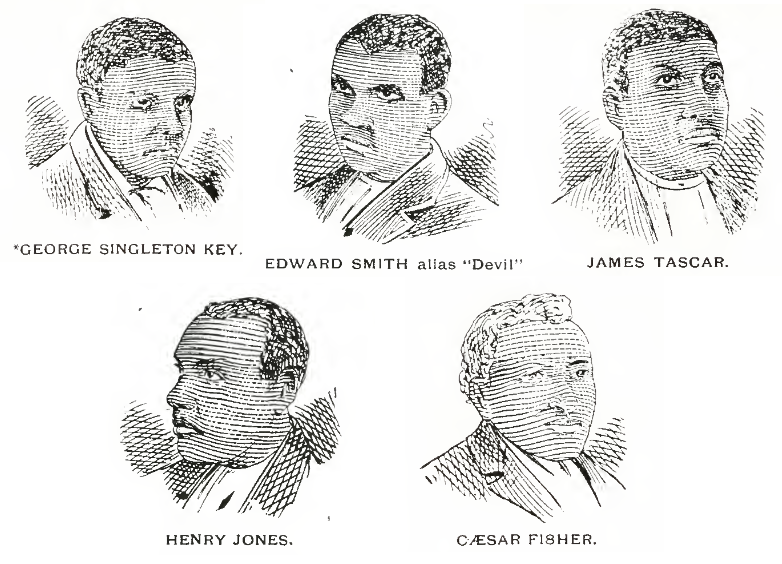We’re happy to present a very incomplete list of cool rad history zines that we distro!
Note that this is not ALL of the zines we carry on our table; some we don’t currently have PDFs of, others aren’t online at this point in time, and we carry a rotating selection of miscellaneous non-history-focused titles when tabling.
A few friendly recommendations for digital zine libraries: Fugitive Distro, 1312 Press, Puget Sound Anarchists, Louise Crowley Library (note most physical zines for sale have a free PDF download), Sprout Distro, A Zine Library
Zines by Historical Seditions
Anarchists and Rebellion in Walla Walla State Prison
In Search of Freedom and Self Determination: A Tour Through the Anarchist Movements in Graz, Austria, 1918-1938 – Letter-Imposed Printing – Digital Reading
The Dude Smashed the Federal Courthouse, Too!
We Don’t Forget: 2017 Inauguration Day Reflections from the Salish Sea – Letter-Imposed Printing – Digital Reading
Regional History
Multiple Eras
A People’s History of the University of Washington – Print
Notes on Mutual Aid Vol 1: A Local History of Survival and Struggle – Print – Read
Portland’s Antifascist History – Print– Read
Late 1800s-Early 1900s
The Everett Massacre – Print
The Seattle General Strike – Read
Red Harbor – Print
Who the hell is Jack London? – Print – Read
The Collected Works of Anna Falkoff – Print – Read
The Unstoppable Anarchist Ersilia Cavedagni – Print – Read
Elena Purgatorio; or, A Brief History of the Galleanisti – Print – Read
The Trials of a Noble Experiment – Print – Read
Mid-Late 1900s
Queer Fire: The George Jackson Brigade, Men Against Sexism, & the Gay Struggle Against Prisons – Print – Read – Listen
N30: The Seattle WTO Protests – A Memoir and Analysis with an Eye to the Future – Print – Read
Sharper Times: Portland Anti-Racist Action & Skinheads Against Racial Prejudice – Print
2000-Occupy Movement
A Shorter History of a Northwest ELF Cell – Read/Print
The Hilltop Boys: A True Story of the Hilltop Crips – Print – Read
You Can’t Shoot us All: Oscar Grant – Print
Against the Police and the World They Maintain: Communiques from the Pacific Northwest – January-March, 2011 – Print
Burning the Bridges they are Building: Anarchist Strategies Against the Police – Puget Sound, 2011 – Print – Read
Standing on the Land to Stand Up Against Pipelines – Print
Love for the Silent Ones: A Collection of Communiques and Reports from Actions in Solidarity with the Northwest Grand Jury Resisters – Print
Bridges Still Burning: An Anarchist Account of Occupy Seattle 2012 – Print
Longview, Occupy, and Beyond: Rank & File and the 89% Unite! – Print
“BLM 1.0”-Present
The Post-Ferguson Struggle Against Police and Fascism in the Pacific Northwest: An Incomplete Glimpse into a Dynamic and Unfolding Context – Print
Towards a More Holistic Violence – Print – Read
Against the Port and its World: Actions Against Fracking in Olympia – Print
Between Storms: Anarchist Reflections Wet’suwet’en Resistance – Print
Heal the People, Heal the Land: Unist’ot’en Camp – Print
So-Called North America
Multiple Eras
500 Years of Indigenous Resistance – Print
In Their Own Tongue: Bats’i’ k’op zapatista – Print – Read
Punk: Dangerous Utopia – Print – Read
Late 1800s-Early 1900s
The Stockade Stood Burning: Rebellion and the Convict Lease in Tennessee’s Coalfields, 1891-1895 – Print
Lowry Wars: Attacking Plantation Society in Reconstruction – Print
Slave Patrols and Civil Servants – Print – Read
Sacco & Vanzetti’s Revenge – Print
David Edelstadt, With His Poems for the Haymarket Martyrs – Print
Ross Winn: Digging Up a Tennessee Anarchist – Print
Bury Me Not in a Land of Slaves – Print – Read
Mid-Late 1900s
Queens, Hookers, and Hustlers: Organizing for Survival and Revolt Amongst Gender-Variant Sex Workers, 1950-1970 – Print – Read
STAR – Print
Militant Flamboyance – Print
jane – Print
Black Mask & Up Against the Wall Motherfucker: Flower Power Won’t Stop Fascist Power – The Story of a Small, Underground 1960s Revolutionary Group in New York City – Print – Read
I Will Not Crawl: Black Struggle & Armed Self Defense – Print
Repression Breeds Resistance: The Black Liberation Army and the Radical Legacy of the Black Panther Party – Print – Read
The Trial Statement of Anarchist & New Afrikan Revolutionary: Kuwasi Balagoon – Print
The Dragon and the Hydra: A Historical Study of Organizational Methods – Read/Print
The National Union of the Homeless: A Brief History – Print
The Oka Crisis of 1990 – Print
Political Prehistory of Love and Rage – Print – Read
Claim No Easy Victories: A History and Analysis of Anti-Racist Action – Print – Read
The Baldies & Anti-Racist Action: A History in Anti-Racist Skinhead Organizing – Print
2000-Occupy Movement
“BLM 1.0”-Present
Anarchist Tactics at Standing Rock – Print – Read
No Regrets: Accounts and Reflections from the 2016 National Prison Strike – Print
It’s a Sin to Kill a Mockingbird: Writings on Scout Schultz, Queer Anarchist Killed by Georgia Tech Polics – Print
We’ve Got Your Back J20 Defense – Print – Read
What They Mean When They Say Peace & The Making of “Outside Agitators” – Print
Global History
Multiple Eras
The Unquiet Dead: Volume .5 – Print – Read – Listen — Volume 1 – Print – Read – Listen — Volume 2 – Print – Read – Listen — Volume 3 – Print – Read – Listen — Volume 4 – Print – Read – Listen — Volume 5 – Print – Read – Listen — Volume 6 – Print – Read – Listen — Volume 7 – Print – Read – Listen — Volume 8 – Not currently online
Yalensky’s Fable Anarchist Black Cross – Print – Read
Anarchic Practices Chilean State – Read
Koukoulofori: Stories, Lessons, and Inspiration from the Greek Anarchist Movement – Print
Mobilisations of Philippine Anarchisms – Print
Can’t Stop Kaos – Print
Against All Tyranny! Essays on Anarchist in Brazil – Print
Late 1800s-Early 1900s
The Devil Rode a Bicycle: Science, Art, and Anarchism – Print
They Leaned on Each Other in Ecstasy – Print
La Band a Bonnot: Robberies and Getaways – Print
Sante Caserio – Print
Anarchists and Anarchism Ottoman Empire – Read/Print
Santos: The Barcelona of Brazil – Print
The Uniqueness of Anarchism in Argentina (1880-1930) – Print
Two Revoutions: The Ghadar Movement and India’s Radical Disapora – Read/Print
Blessed is the Flame – Print
Eternal War on the Hitler Youth – Print
A Jewish Anarchist Refutation of the Hammer and Sickle – Print – Read
Mid-Late 1900s
Memory Loss – Print
The Federacion Anarquista Uruguaya: Crisis, Armed Struggle, and Dictatorship, 1967-85 – Print – Read
“BLM 1.0”-Present
Don’t Try to Break Us – We’ll Explode: The 2017 G20 and the Battle of Haburg: A Full Account and Analysis – Print
Memories from La Zad – Print








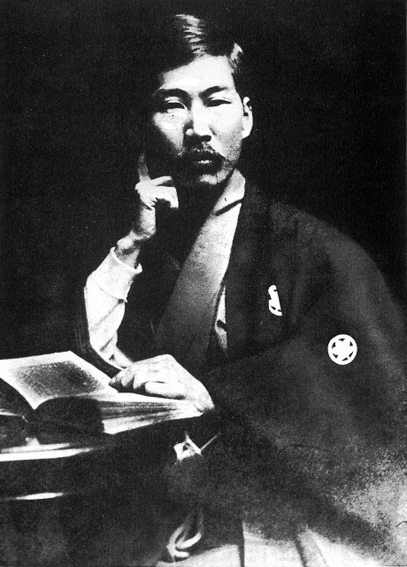
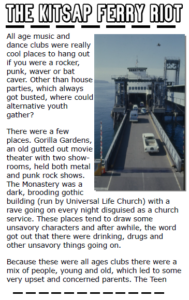 The Kitsap Ferry Riot tells the story of the restrictive old Seattle Teen Dance Ordinance and a punk riot that occurred on the ferry from Bremerton as a result. The text is pulled from the defunct website of a documentary about the riot by Chris Loomey,
The Kitsap Ferry Riot tells the story of the restrictive old Seattle Teen Dance Ordinance and a punk riot that occurred on the ferry from Bremerton as a result. The text is pulled from the defunct website of a documentary about the riot by Chris Loomey, 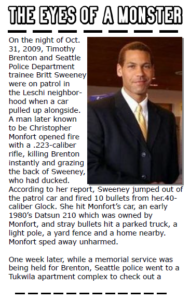 The Eyes of a Monster is the tale of Chris Monfort. Appalled by police brutality in his community, Chris looked the monster in the eye and refused to blink. He launched a one-man war against Seattle Police in 2009, bombing vehicles and killing one SPD officer in an ambush. Chris mysteriously died in Walla Walla State Penitentiary in 2017. (3 sheets letter)
The Eyes of a Monster is the tale of Chris Monfort. Appalled by police brutality in his community, Chris looked the monster in the eye and refused to blink. He launched a one-man war against Seattle Police in 2009, bombing vehicles and killing one SPD officer in an ambush. Chris mysteriously died in Walla Walla State Penitentiary in 2017. (3 sheets letter)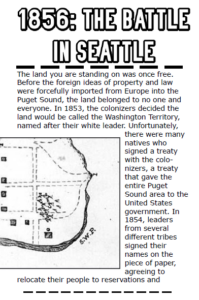 1856: The Battle in Seattle is the tale of Chief Leschi, the Nisqually, and other warriors who fought to expel the settler-colonial leviathan in its infancy. (2 sheets letter)
1856: The Battle in Seattle is the tale of Chief Leschi, the Nisqually, and other warriors who fought to expel the settler-colonial leviathan in its infancy. (2 sheets letter)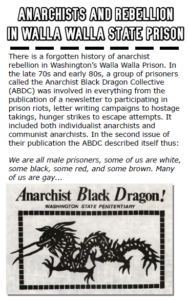 Anarchists and Rebellion in Walla Walla State Prison is an account of the Anarchist Black Dragon, an imprisoned anarchist collective who published an underground newspaper and helped spur several prisoner uprisings. (1 sheet letter)
Anarchists and Rebellion in Walla Walla State Prison is an account of the Anarchist Black Dragon, an imprisoned anarchist collective who published an underground newspaper and helped spur several prisoner uprisings. (1 sheet letter)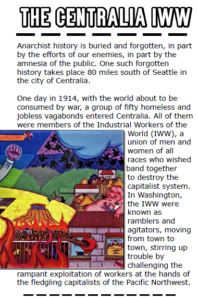 The Centralia IWW tells of the lumberjacks and hobos who organized a revolutionary union in this small Washington town. The intense repression they faced culminated in the so-called Centralia Tragedy in 1919. (2 sheets letter)
The Centralia IWW tells of the lumberjacks and hobos who organized a revolutionary union in this small Washington town. The intense repression they faced culminated in the so-called Centralia Tragedy in 1919. (2 sheets letter) The Dude Smashed the Federal Courthouse, Too! recalls the nationwide uprising in 1970 over the trial of Black Panther Bobby Seale and the Chicago Seven. The rowdiest solidarity action occurred in Seattle, where the federal courthouse was smashed. One of the most famous arrestees was Jeff Dowd, inspiration for “The Dude” in “The Big Lebowski” (1 sheet letter)
The Dude Smashed the Federal Courthouse, Too! recalls the nationwide uprising in 1970 over the trial of Black Panther Bobby Seale and the Chicago Seven. The rowdiest solidarity action occurred in Seattle, where the federal courthouse was smashed. One of the most famous arrestees was Jeff Dowd, inspiration for “The Dude” in “The Big Lebowski” (1 sheet letter)
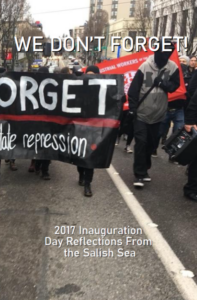
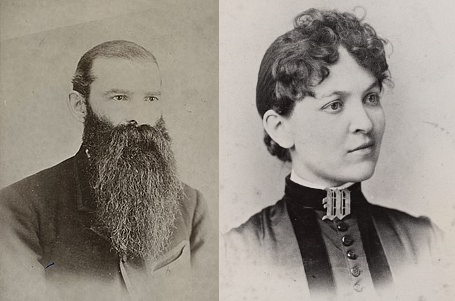
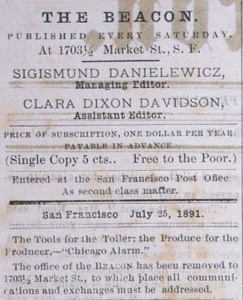
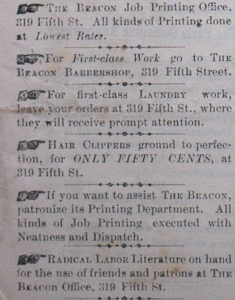
![Logo with a glove topped by a mason's toop and a phyrgian cap, with International Workmen's Association [The Red]' below](https://historicalseditions.noblogs.org/files/2022/04/IWA-Truth-Logo-300x194.png)
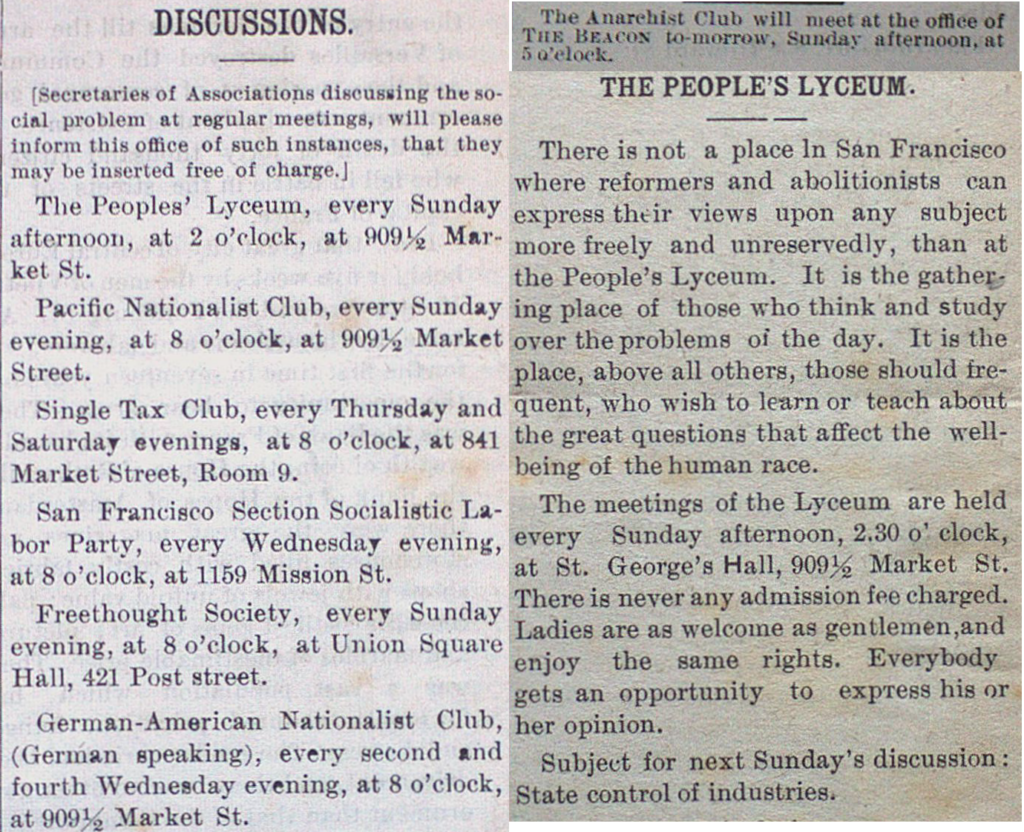
!['The Beacon' Radical Journals listings for: Freedom (Cook Co. Il Chicago), Twentieth Century (New York), Lucifer (Topeka, KS), Egoism (San Francisco), Freethought (San Francisco), The Reasoner (New York), Chicago Liberal (Chicago), Freedom (London), The Anarchist Labor Leaf (London), The Commonwel (London), Freiheit (New York), Der Anarchist (St. Louis), Der Arme Teufel (Detroit), Die Parole (St. Louis), Die Autonomie (London), La Revolte (Paris), Volne Listy (New York), Der Arbeiter Freund (London), Freie Arbeiter Stimme (New York), Nedeln Hlas Lidu (care of Freiheit in New York), Tydni List Hlas Lidu (New York), El Persequido (Buenos Ayres [sic], Argentina), Arbejderen from (Kopenhagen, Denmark)](https://historicalseditions.noblogs.org/files/2022/04/Beacon-International-1024x972.png)
